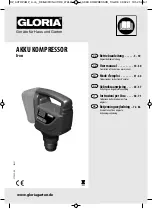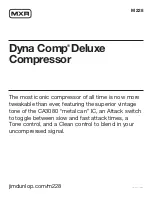
9
Figure 5. Drain Line
Refrigeration Piping
Suction Lines
NOTE:
If the suction line must rise to the point higher than the suction connection on
the evaporator, a suction line trap at the outlet of the evaporator must be provided.
Horizontal suction lines should slope away from the evaporator toward the compressor at the rate of
1/4’ per 10 feet for good oil return. When multiple evaporators are connected in series using a common
suction line, the branch suction lines must enter the top of the common suction line.
Suction lines that are outside of refrigerated space must be insulated. See “Line Insulation” for more
information.
Suction Line Risers
NOTE:
To provide proper oil return, a suction trap must be provided at the base of
all suction risers.
Prefabricated wrought copper traps are available, or a trap can be made by using two street ells and one
regular ell. The suction trap must be the same size as the suction line. For long vertical risers, additional
traps may be necessary. Generally, one trap is recommended for each length of pipe (approximately 20
feet) to insure proper oil movement. See Figure 4 below for methods of constructing proper suction line
P-traps.
Condensate Drain Lines
Copper drain lines should be used and properly protected from freezing. In running drain lines, provide
a minimum of 4 inches per foot pitch for proper drainage. Drain lines should be at least as large as
the evaporator drain connection. All plumbing connections should be made in accordance with local
plumbing codes. All condensate drain lines must be trapped, and run to an open drain. They must
never be connected directly to the sewer systems. Traps in the drain line must be located in a warm
ambient. We recommend a trap on all evaporators. Traps
located outside, or extensive outside runs of drain line
must be wrapped with a drain line heater. The heater
should be connected so that it is continuously on. It is
recommended that the drain line be insulated to prevent
heat loss. A heat input of 20 watts per lineal foot of
drain line for 0ºF (-18°C) room applications and 30 watts
per lineal foot for -20°F (-29°C) rooms is satisfactory.
Inspect the drain pan periodically to insure free drainage
of condensate. If the drain pan contains standing water,
check for proper installation. The drain pan should be
cleaned regularly with warm soapy water.
WARNING:
All power must be disconnected
before cleaning. The drain pan also serves as
cover for hazardous moving parts. Operation
of unit without drain pan constitutes a hazard.
Figure 4. Suction P-traps
NOTE:
Always trap drain lines individually
to prevent vapor migration.
Содержание FlexPack H-IM-FP
Страница 16: ...16 Preventive Maintenance...
Страница 17: ...17 Preventive Maintenance...
Страница 22: ...22 Notes...
Страница 23: ...23 Notes...










































